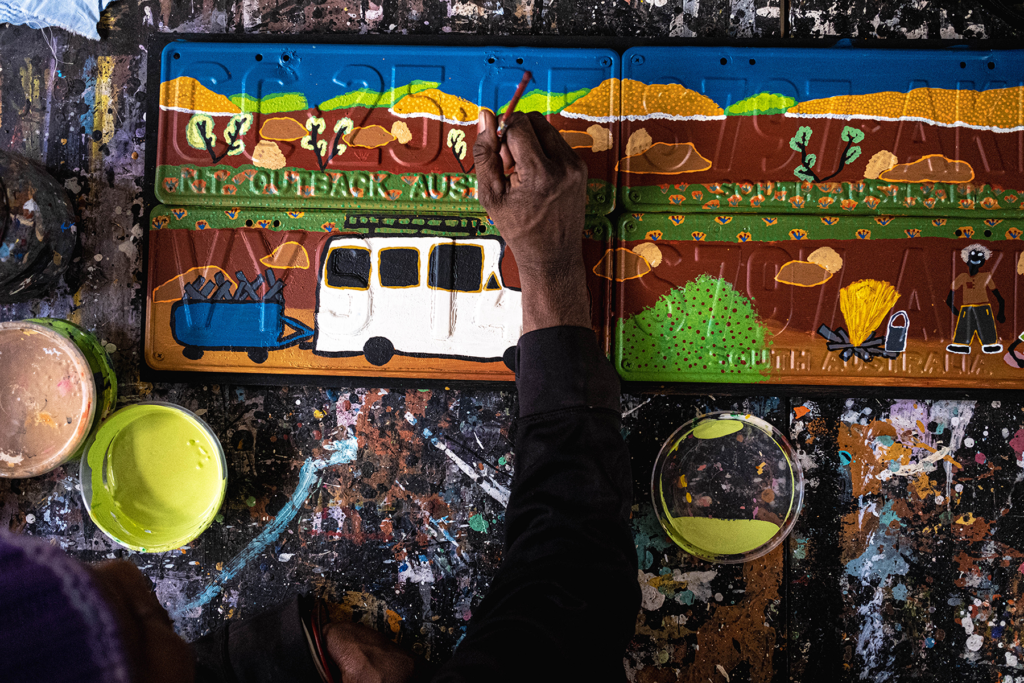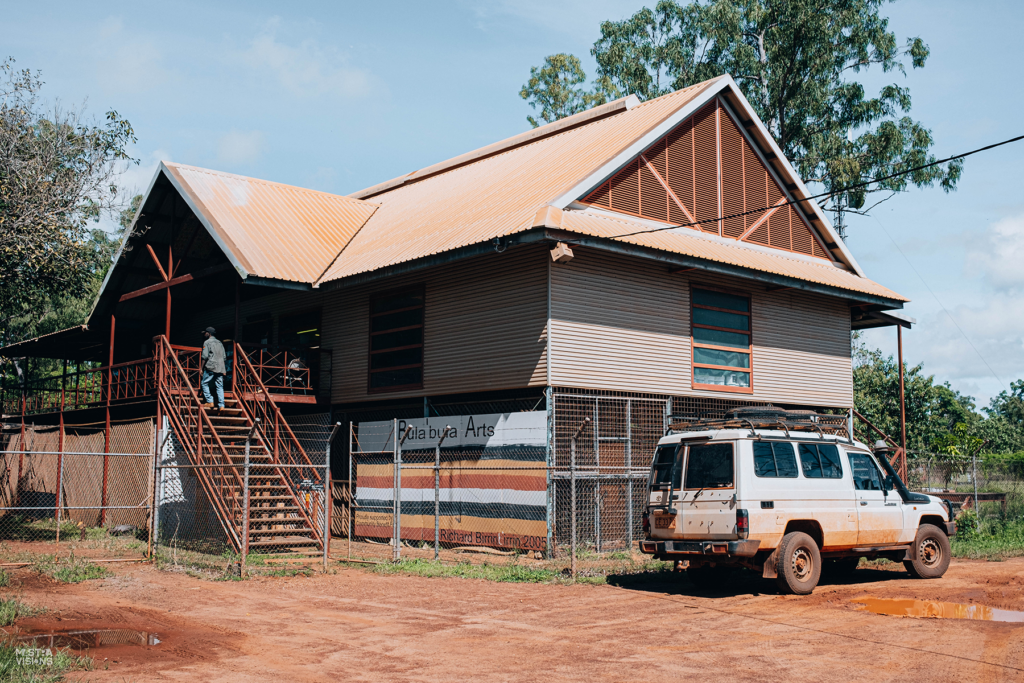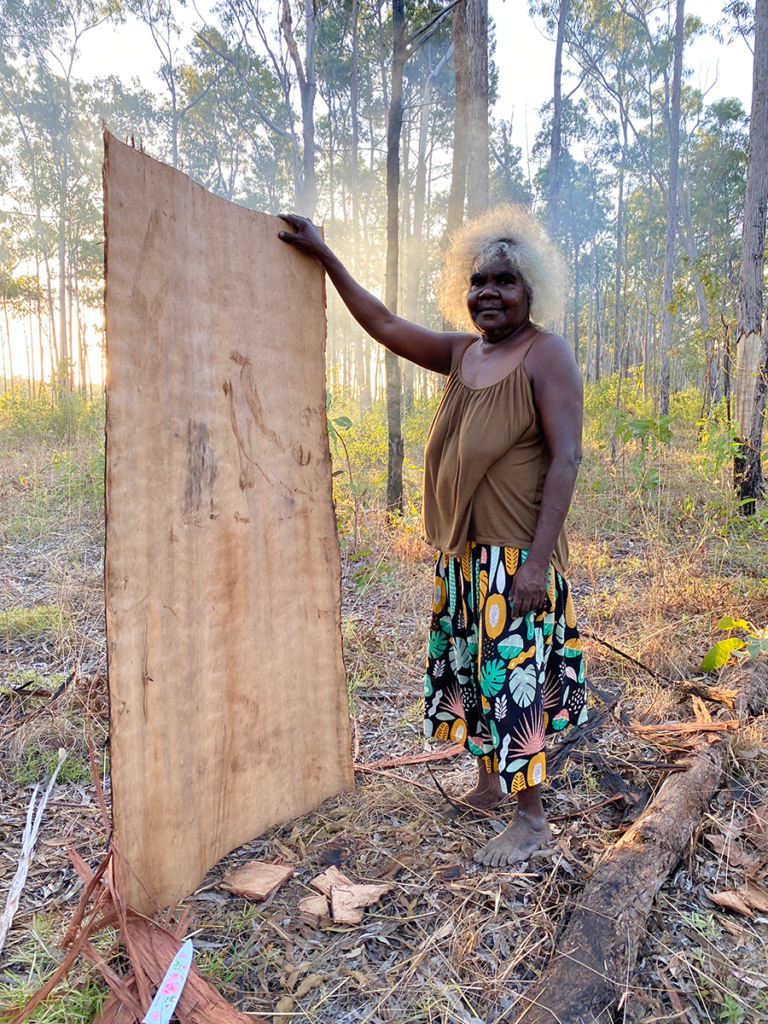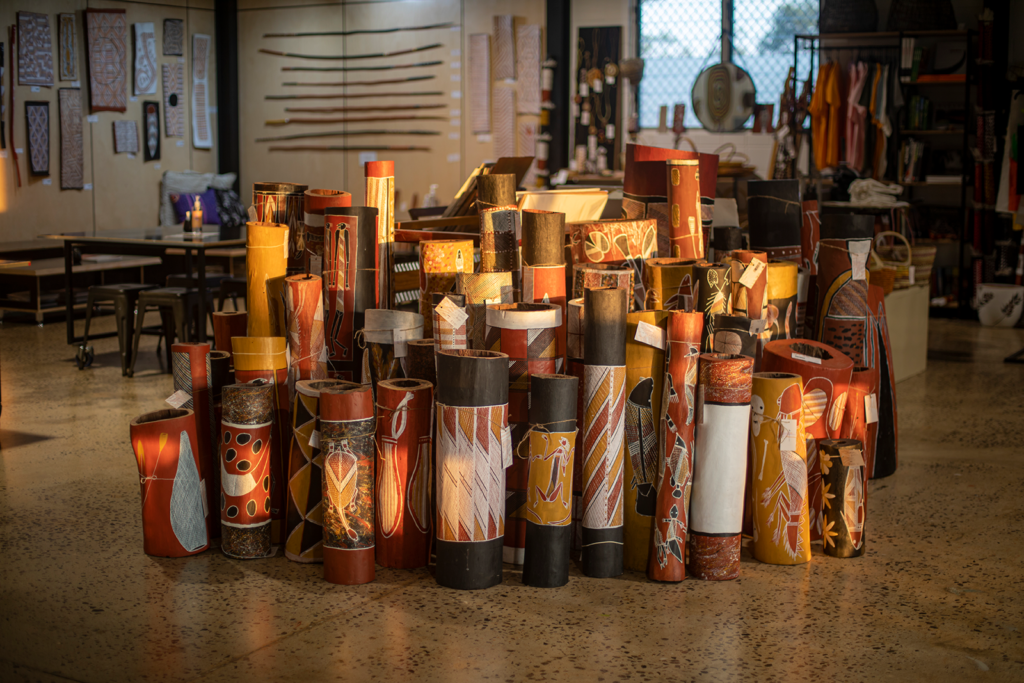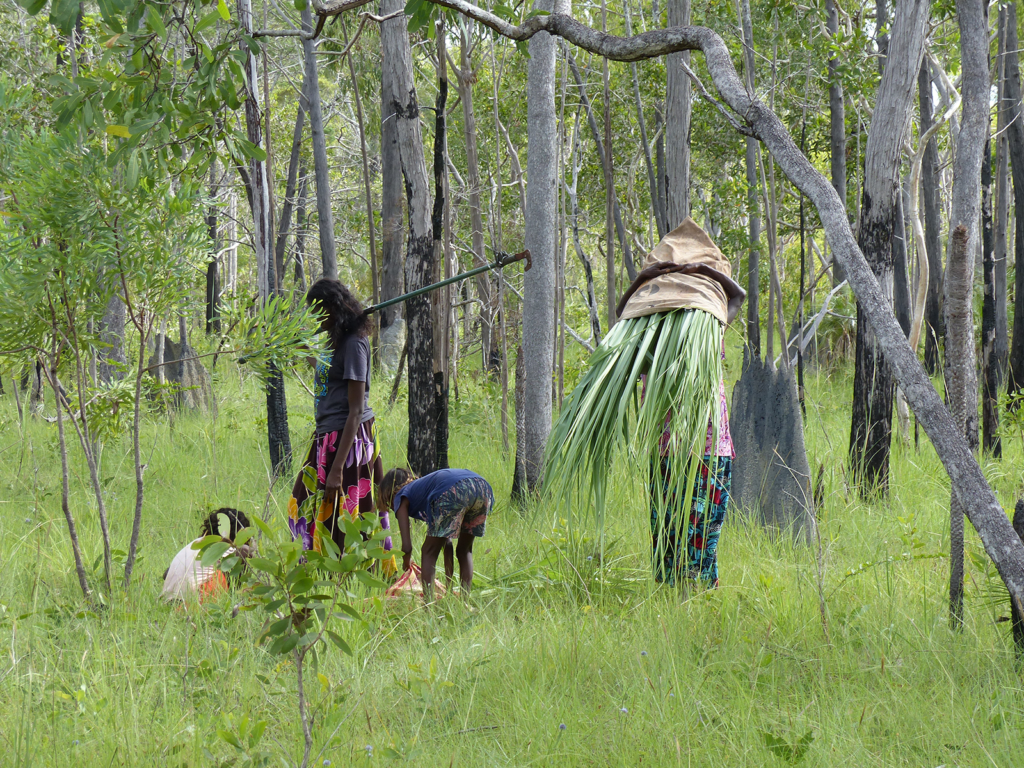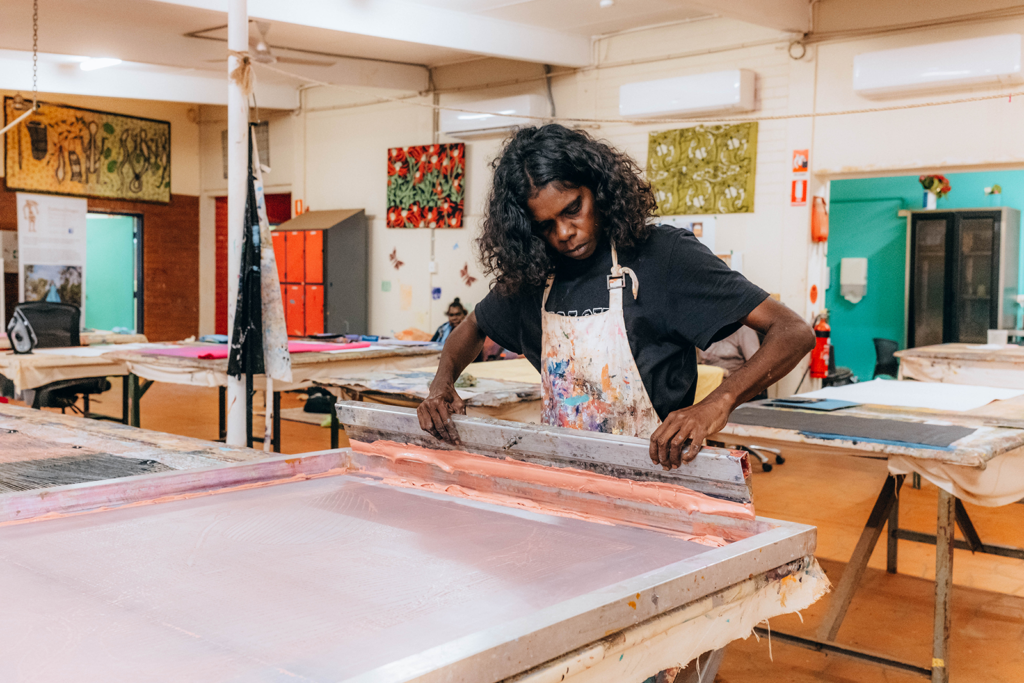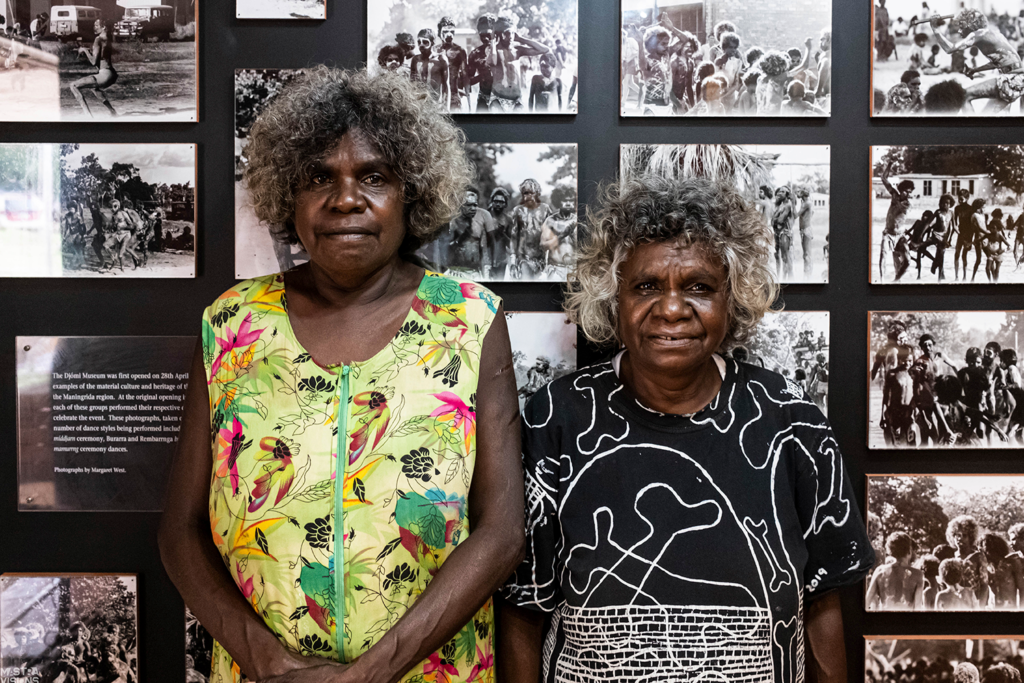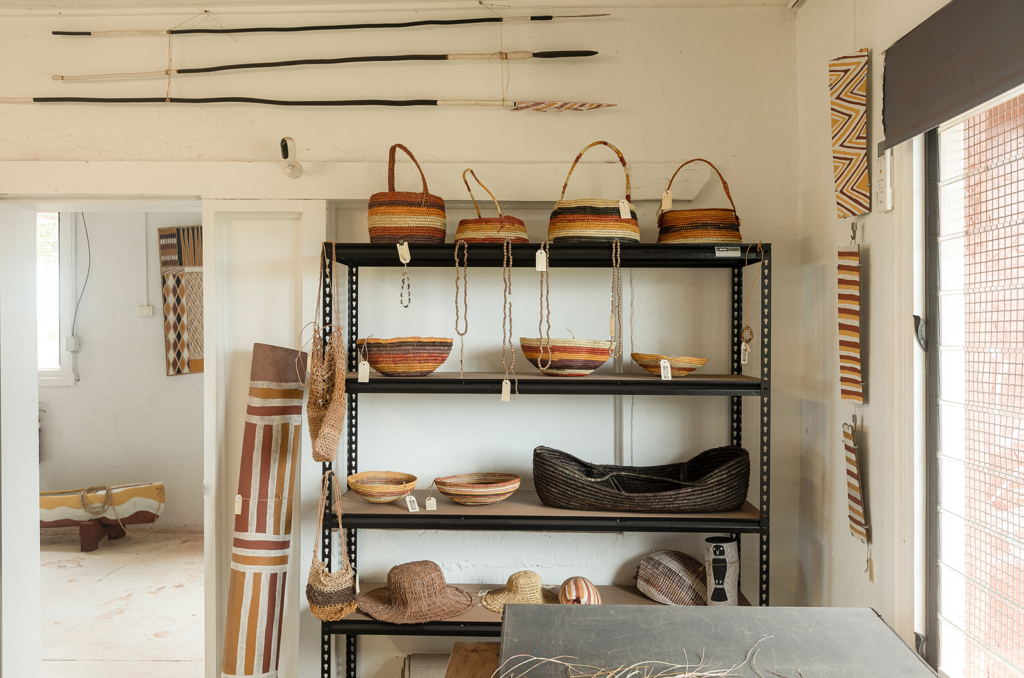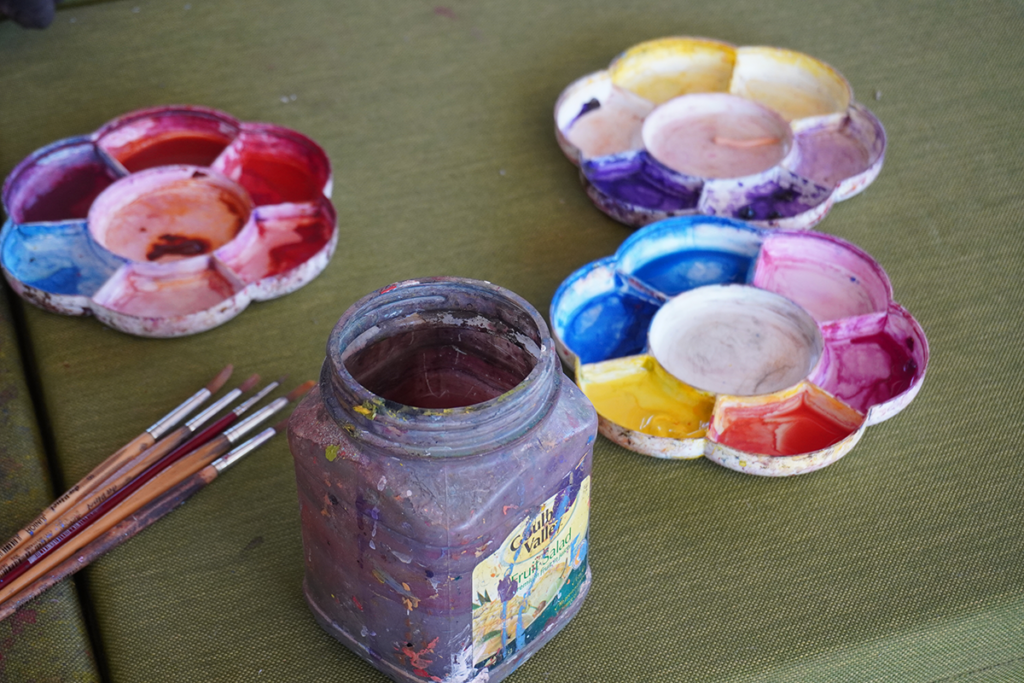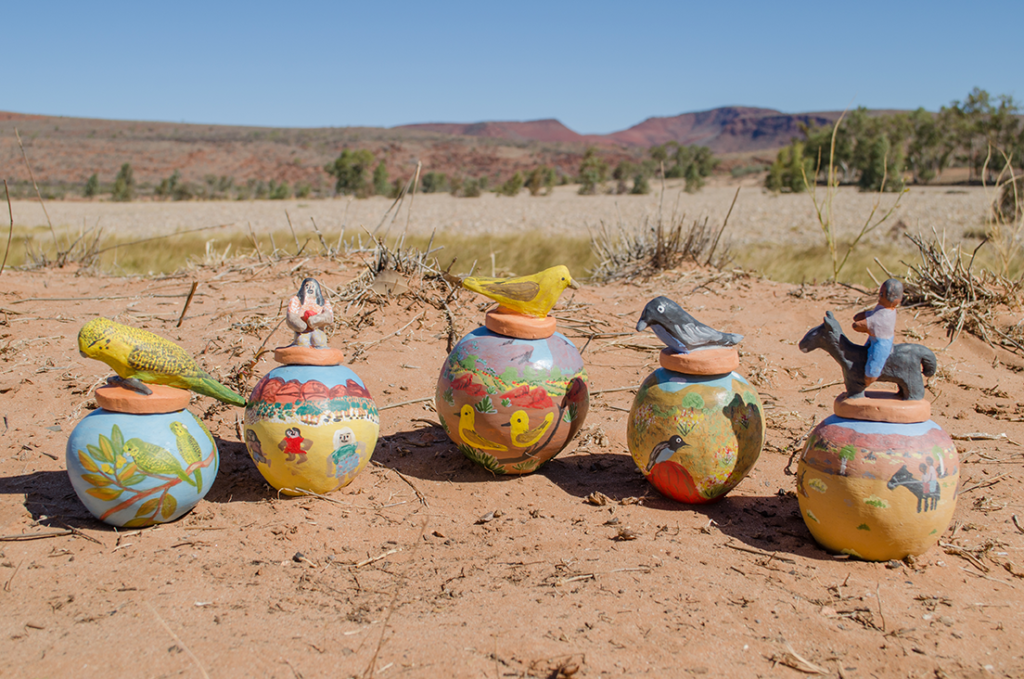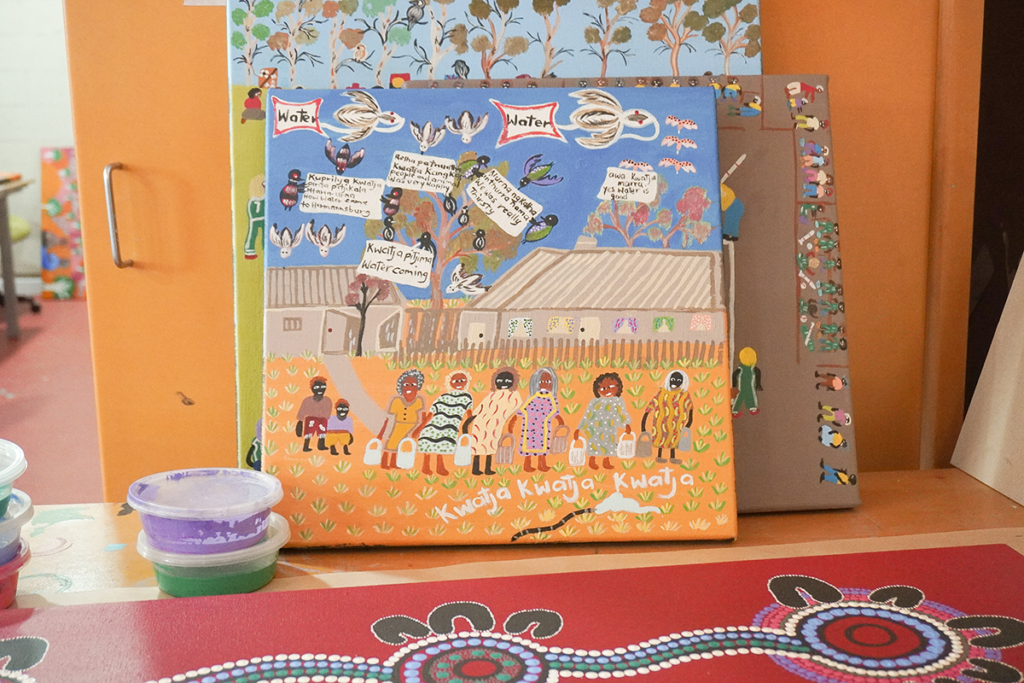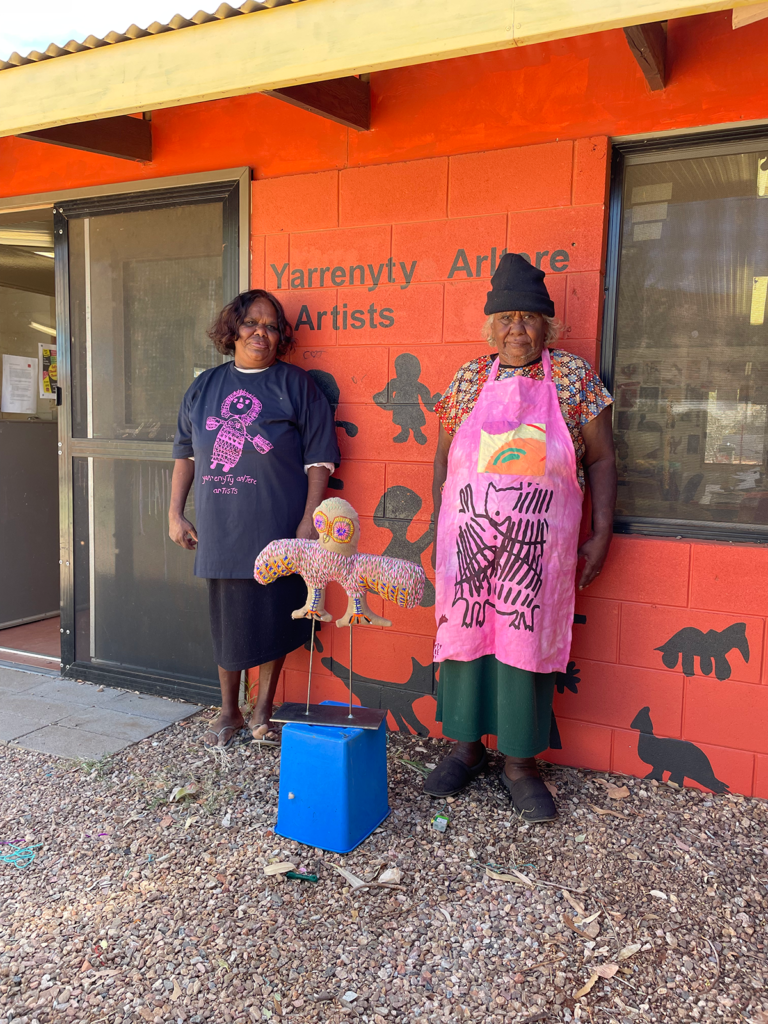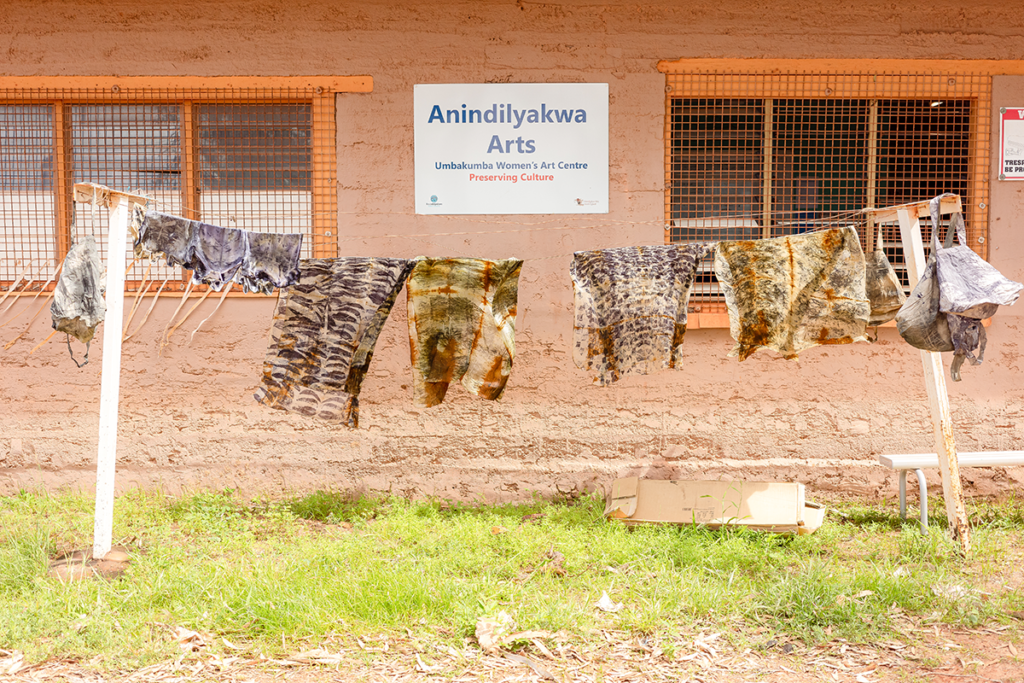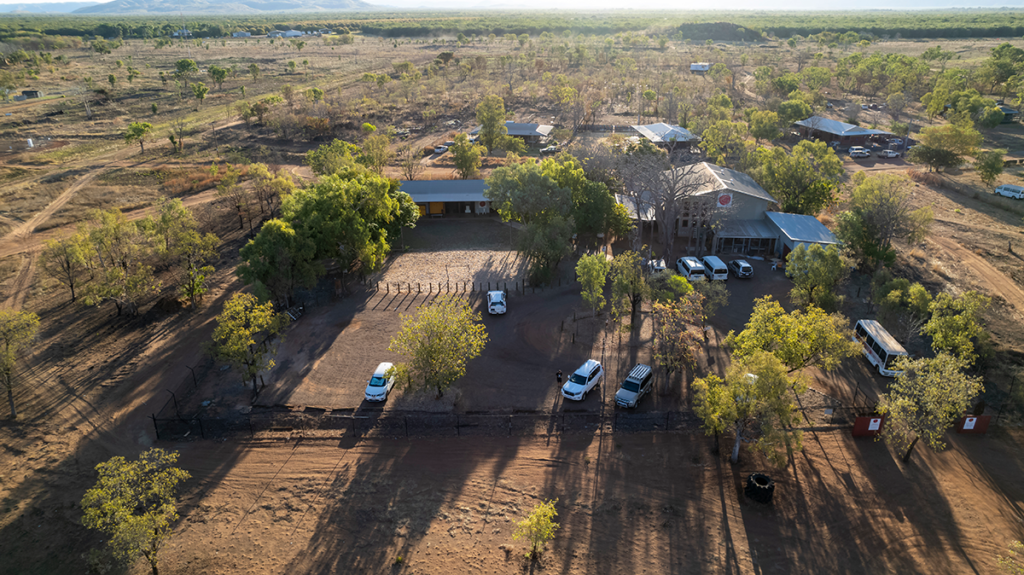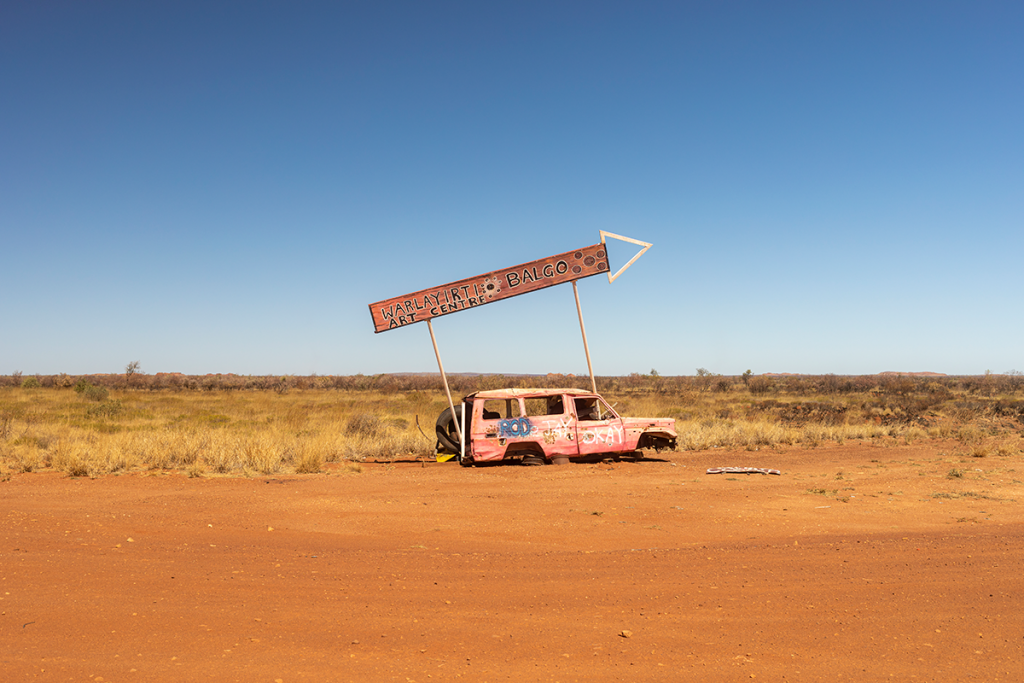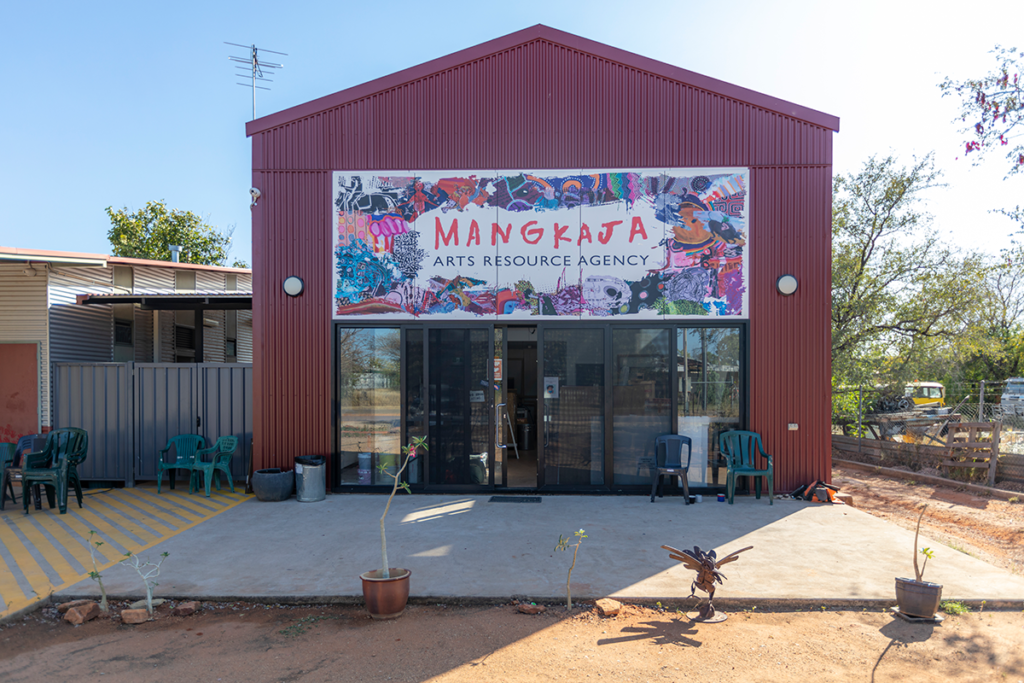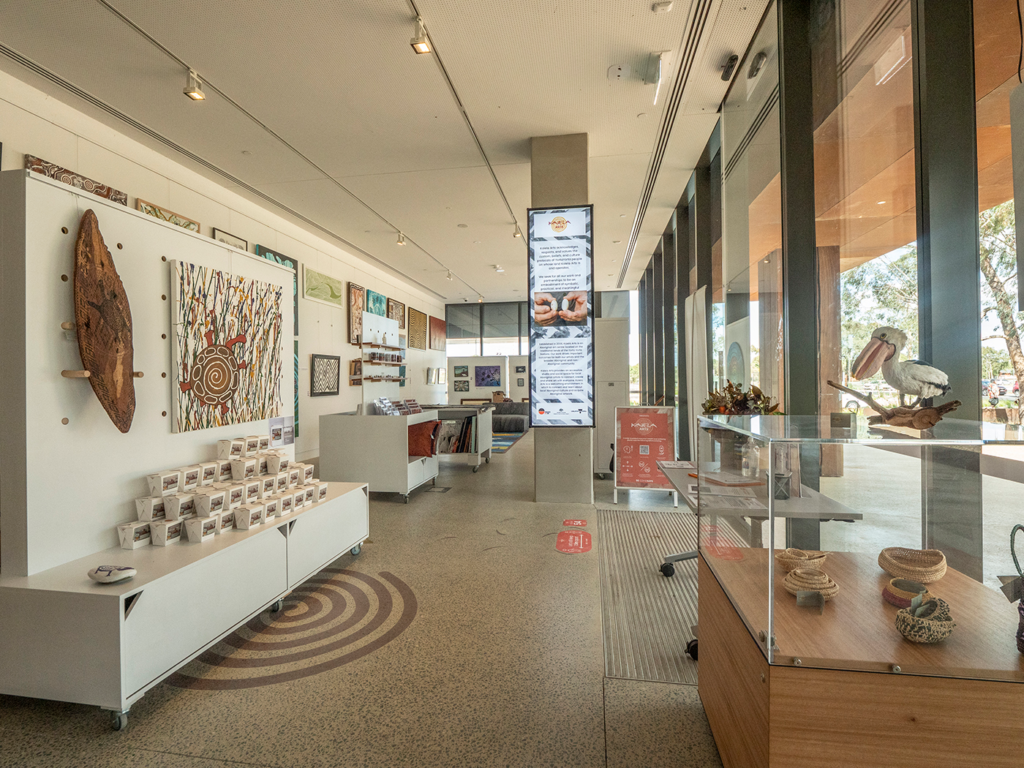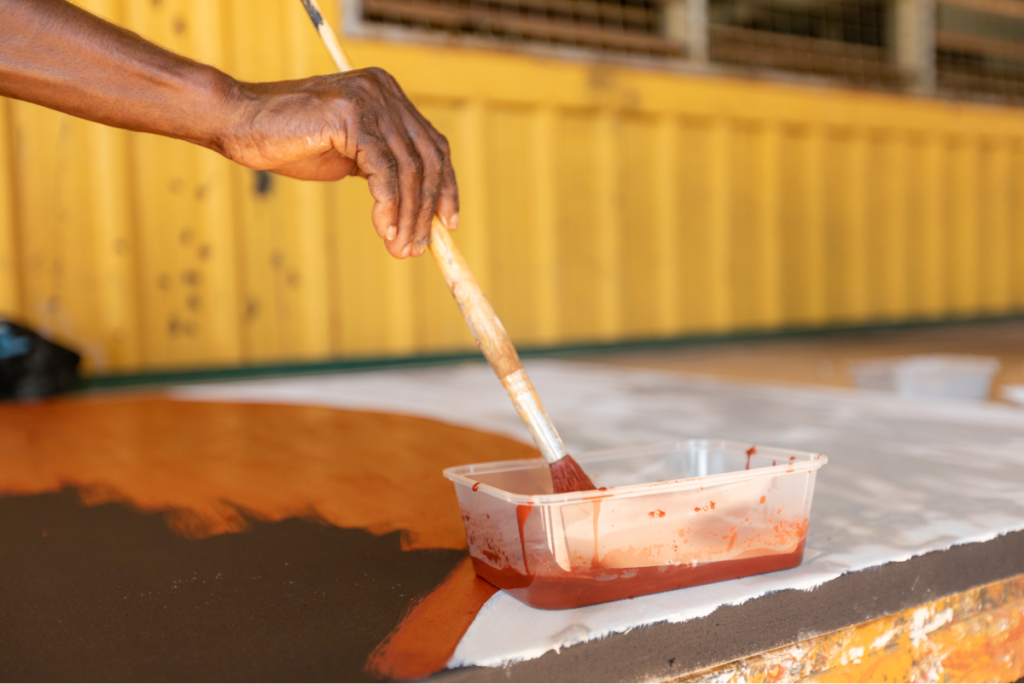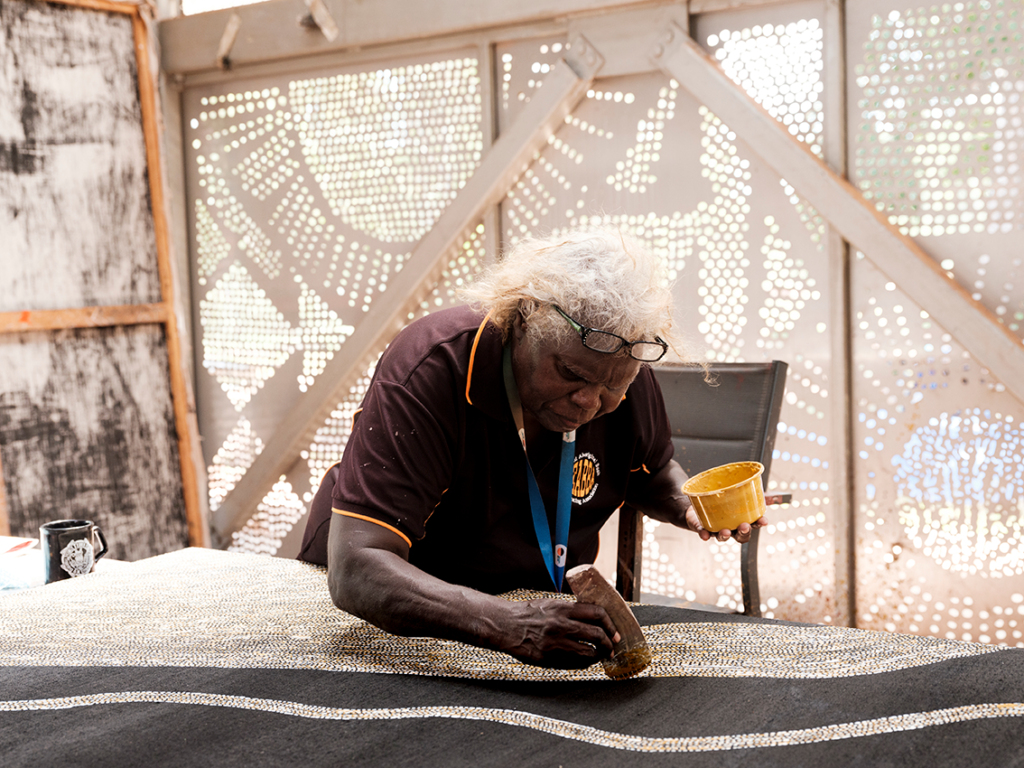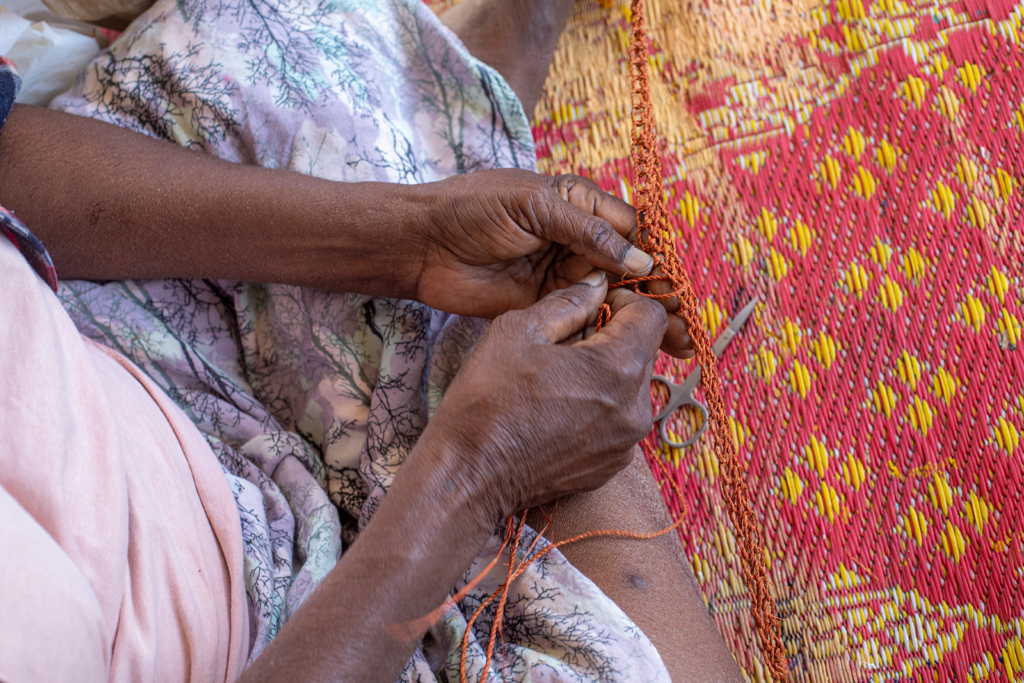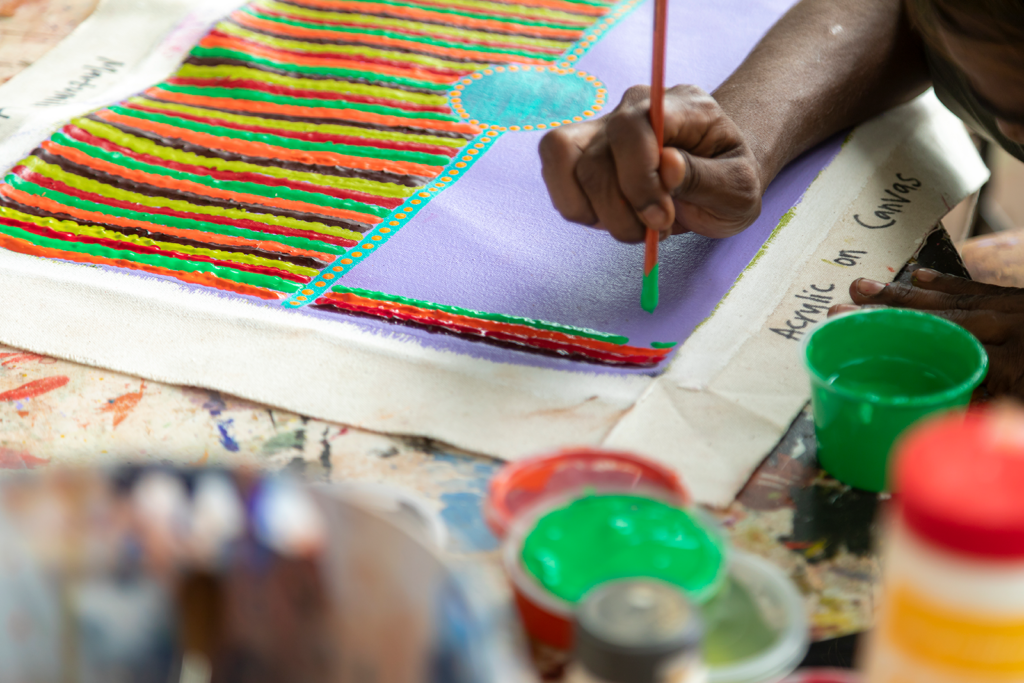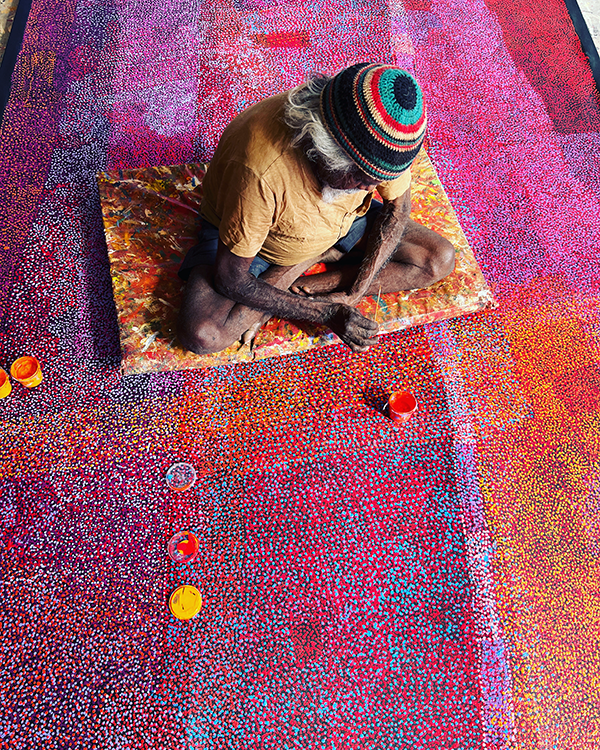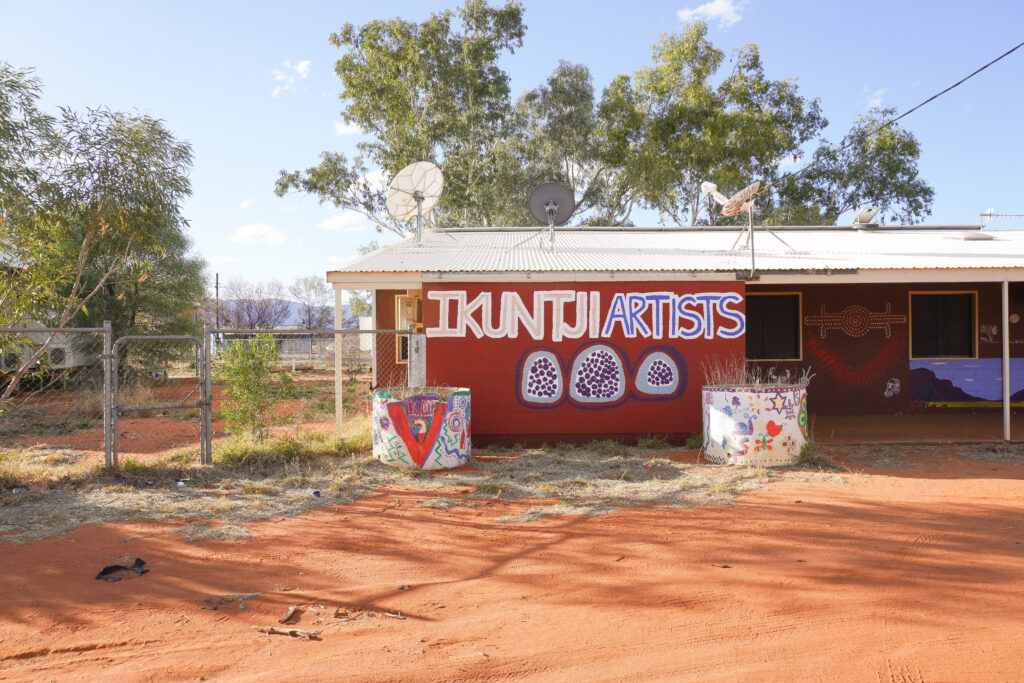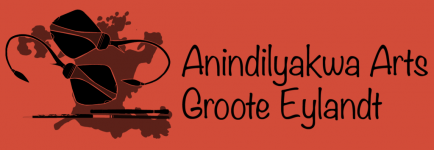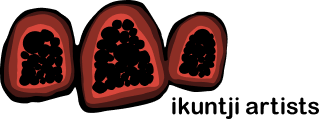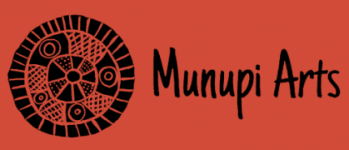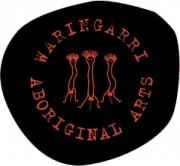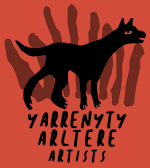Art, Culture, Country
Partnering with remote Indigenous Art Centres to deliver a landmark digital project that empowers Aboriginal and Torres Strait Islander artists to create and share unique arts and cultural experiences with the world.


Art, Culture, Country
Partnering with remote Indigenous Art Centres to deliver a landmark digital project that empowers Aboriginal and Torres Strait Islander artists to create and share unique arts and cultural experiences with the world.

Celebrating 20 Years of Ceramics at Ernabella Arts
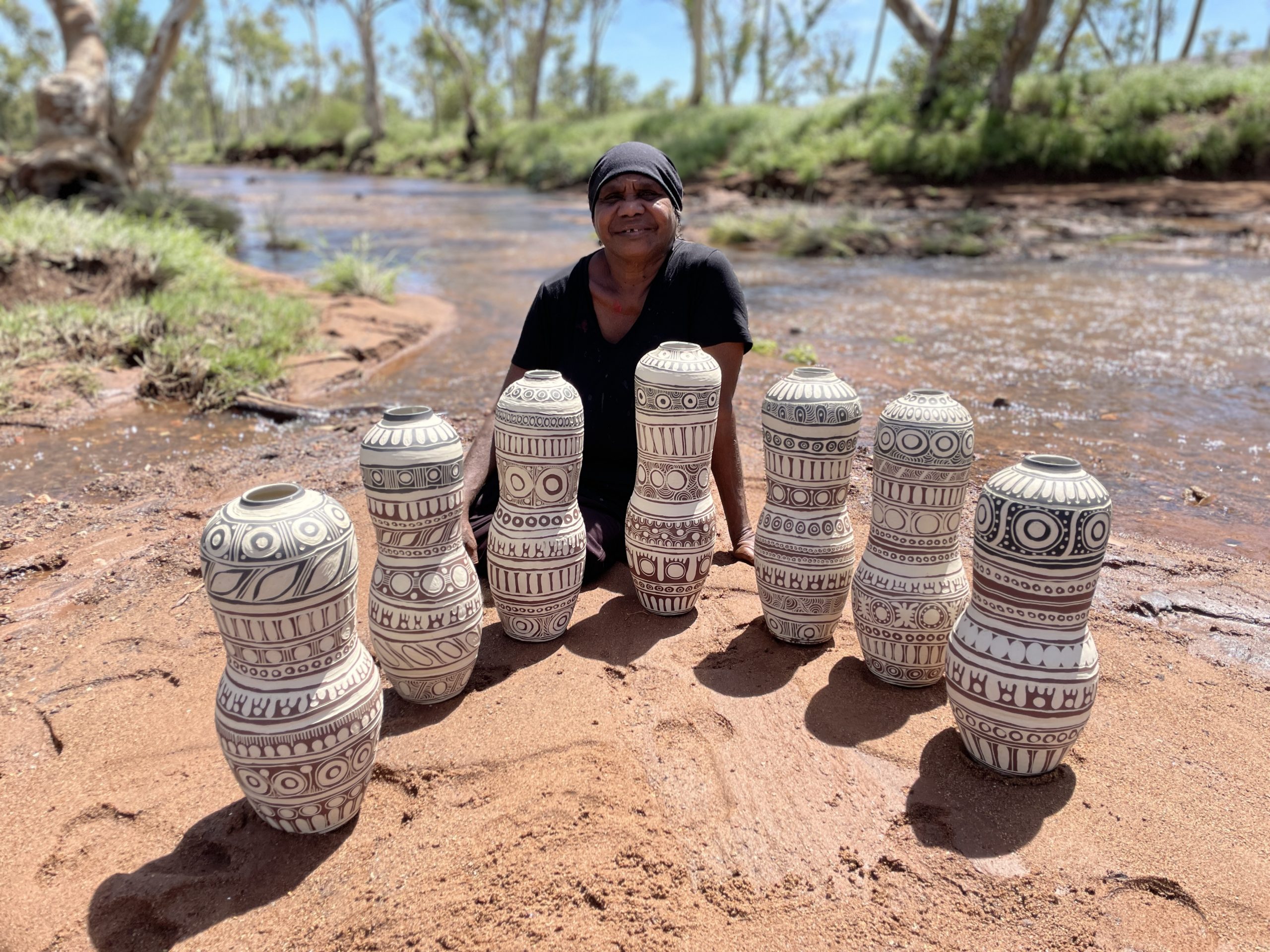
Nestled alongside the Musgrave Ranges in Pukatja community in the remote north-west of South Australia, Ernabella Arts on the Aṉangu Pitjantjatjara Yankunytjatjara (APY) Lands is the oldest continuously running Indigenous art centre in Australia. In the 1930’s a mission was established on the Ernabella sheep station, and in 1948 a craft room was founded. For many years the local aṉangu ladies hand spun sheep’s wool and weaved it into floor rugs and wall hangings. These weavings featured the distinctive motif that became known as the Ernabella Walka or Ernabella Design.
In the 1970’s the artists were introduced to the technique of batik. Over the next twenty years Ernabella became renowned for these silk prints, many of which are now housed in international collections and institutions.
Ernabella artists have always embraced new ways to express their tjukurpa – sacred stories of law, culture and Country. A partnership with JamFactory in Adelaide presented an opportunity to work in a new medium of clay. Initially, plain partially fired terracotta plates made at the JamFactory were sent on the truck to Ernabella for artists to apply their designs, notably the Ernabella Walka. Following a series of further workshops onsite and in Adelaide, in 2003 it was decided to convert the existing screen-printing area into a fully-fledged ceramics studio.
In the twenty years since then the artists have developed their own unique forms, styles and skills and Ernabella Arts has become synonymous nationwide and overseas with Indigenous ceramics. Artists hand build ceramics and also work on wheel thrown vessels. They use the sgraffito technique to depict tjukurpa and walka relating to the landscape.
Ernabella Arts is one of only a handful of remote Indigenous art centres with a ceramics studio and the only one on the APY Lands. In 2023 the significance of the studio was recognised when Anne Nginyangka Thompson won the Wandjuk Marika 3D Award at the Telstra National Aboriginal and Torres Strait Islander Art Awards for her ceramic artwork Aṉangu History.
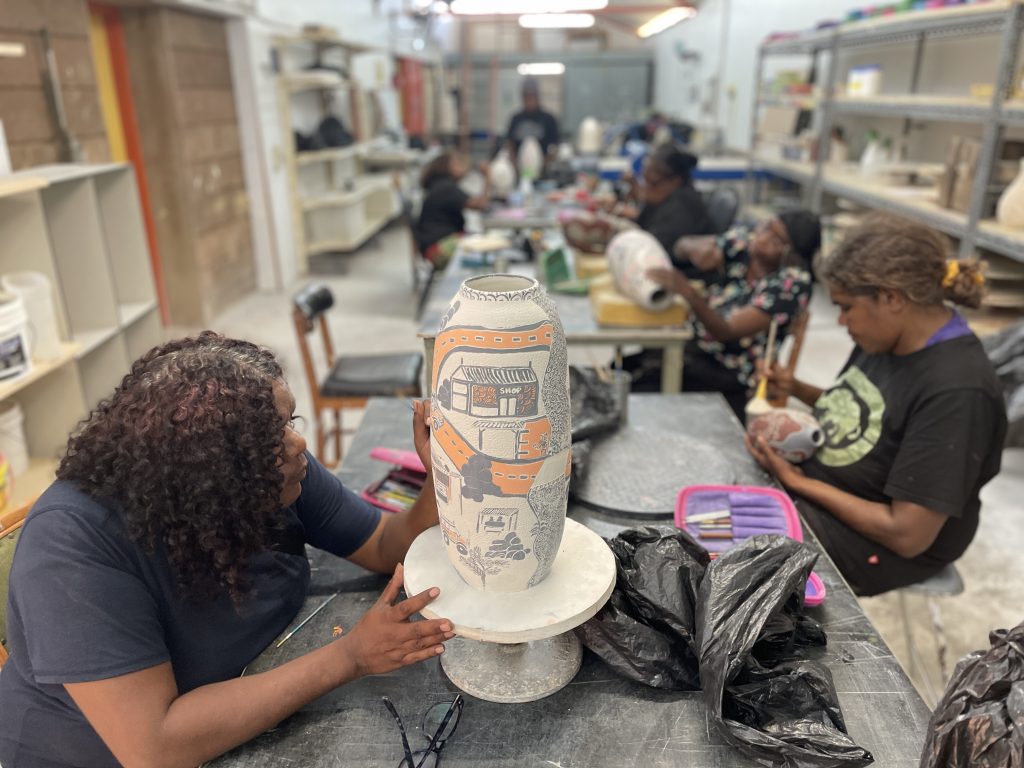
“When I carve the clay, I am imagining myself living with the old people, my ancestors, I am remembering them, and the way things used to be. For a long time, Anangu told stories by sitting on the ground and drawing in the dirt. Now, we are doing something new. We are sketching, carving and using brushes on clay. We have learnt a new way to tell our stories through making ceramics. Even though we are living in a technological world, we must not forget the knowledge, culture and the Anangu way. Making ceramics with our stories is keeping our culture strong for the next generations.
We love working on ceramics, it gives us peace and calm to concentrate on our designs and stories. Our stories come from our ancestors. It’s a knowledge that has been passed on to the next generation and we use traditional right through to contemporary design. We paint and draw Country, landscapes, various bush foods, water from rockholes and birds. Tjukurpa such as Seven Sisters and all of the others belong with the land. This belongs to Anangu to keep passing on, and to be kept, as it’s important.“
Anne Nginyangka Thompson, Chair Ernabella Arts
At the heart of the art centre and ceramics studio is the intergenerational passing on of knowledge and skills. Senior artists who first came to the craft room as young girls to sit with and learn from their mothers are now sharing stories and demonstrating artistic techniques to their own children and grandchildren. There are about 30 senior and emerging ceramic artists working regularly in the studio. They are assisted by the Ceramics Manager and local aṉangu arts workers, as well as a number of visiting artists who run specialised onsite workshops during the year.
Ernabella artists are celebrated for the range and scope of their artistic styles. Derek Jungarrayi Thompson sensitively depicts country and the ancestral animals that inhabit the landscape such as wanampi (watersnakes) and ngintaka (lizards) while Lynette Lewis ceramics are instantly recognisable for her depictions of tjala (honey ants). Alison Milyika Carroll uses colour and design to reflect the variations in the desert surrounding Pukatja. Rupert Jack, the local pastor, incorporates Biblical stories, tjukurpa and scenes from his younger days as a stockman, employing bold iconography to portray these themes. Emerging artists Janice Stanley and Melissa Lewis express their own interpretation of the environment with their delicate imagery of putipulawa putitja (wildflowers) and nyalpi punu ilkuwara, the leaf of the ilkuwara tree where the witchetty grubs live.
Tjunkaya Tapaya OAM says: “I hold strongly the important Kungkarangkalpa or Seven Sisters tjukurpa. This is one of the main stories I lay down on my ceramics. The Seven Sisters had come from the north, and they had come right through our country at Witapula (my birthplace.) This is a big important tjukurpa and cultural heritage for our country, which we want all our young people to know and understand and to keep looking after it strongly. Too many of our oldest traditional owners have passed away now, and so we younger ones have picked up our responsibilities to care for our cultural heritage.“
Lead image: Alison Milyika Carroll, courtesy Ernabella Arts
UPLANDS is an immersive digital project that has been designed to celebrate Indigenous Art Centres and share Aboriginal and Torres Strait Islander artistic and cultural practices with the world.
This large scale immersive digital mapping project features over twenty remote Indigenous Art Centres, and interviews with over 150 Indigenous artists and arts workers from across the country.
UPLANDS is a project by Agency and has been funded by the Australian Government through the Restart to Invest, Sustain and Expand (RISE) program and the Indigenous Visual Art Industry Support (IVAIS) program.
Government Partners


Acknowledgement of Country
We acknowledge the Traditional Owners and Sovereign Custodians of the land on which we live and work. We extend our respects to their Ancestors and all First Nations peoples and Elders past, present, and future.
